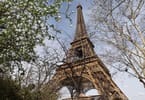BEIJING – Impoverished Tibet is suffering a huge loss to its lucrative and fast-growing tourism industry as the government blocks foreign visitors after last month’s deadly riots, business people in the region said.
Travel agents, hotels and shops in other Tibetan areas of western China reported seeing zero to a trickle of customers due to the ban on inbound foreigners and a lack of Chinese tourists.
At the three-star Shambala Hotel that features ornate Tibetan decor and hearty yak meat meals in downtown Lhasa, all 100 rooms were empty on Wednesday, a sales department staffer said.
A 455-room, four-star competitor, the Lhasa Hotel, the most luxurious hotel in predominately Buddhist Tibet, said merely that visitor levels were down.
Tour bookings were also down as the government has not said when it will let people in again, said Gloria Guo, a business department staffer with the Xi’an-based Internet travel service TravelChinaGuide.com
“We’re just waiting for notification,” Guo said. “It’s hard to say what the impact will be.”
Trouble in the remote, mountainous region that China’s Communist troops entered in 1950 began with a series of monk-led protests that culminated in a violent riot in Lhasa on March 14. Protests have since hit other Tibetan areas of China.
“We’re operating normally but don’t see any people,” said a manager, surnamed Qiu, with the Ailaiyi clothing store in Lhasa. “We see Tibetans but no Han Chinese, and no foreigners. Most people don’t want to come up here. They’re afraid.”
China says 18 civilians died in the Lhasa violence. Exiled representatives of the Dalai Lama, a Tibetan spiritual leader who China accuses of planning the upsets, say about 140 people died.
Since the day after the Lhasa riots, the government has barred foreign passport holders from accessing heavily militarized Tibetan regions.
Tourism took off in the 1980s, supplementing income staples such as herding and infrastructure projects. Boosted by extra flights and a high-elevation railway that opened in 2006, tourism rose 60 percent to 4 million people in 2007, state media say.
In the Tibet Autonomous Region, tourism was worth more than $17.5 million in 2006, Chinese media have reported.
“I should think the loss will be huge because tourism is important to that area,” said Zhao Xijun, a finance professor at Renmin University of China.
“The lack of income will affect normal expenses, meaning that hotels and travel agents will see losses.”
رئيٽرز
هن آرٽيڪل مان ڇا وٺو:
- Trouble in the remote, mountainous region that China’s Communist troops entered in 1950 began with a series of monk-led protests that culminated in a violent riot in Lhasa on March 14.
- Travel agents, hotels and shops in other Tibetan areas of western China reported seeing zero to a trickle of customers due to the ban on inbound foreigners and a lack of Chinese tourists.
- Tour bookings were also down as the government has not said when it will let people in again, said Gloria Guo, a business department staffer with the Xi’an-based Internet travel service TravelChinaGuide.






















